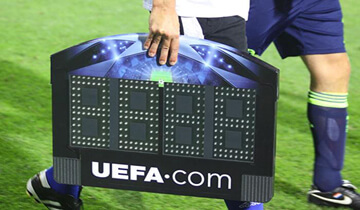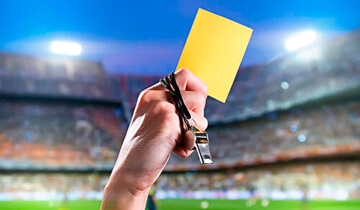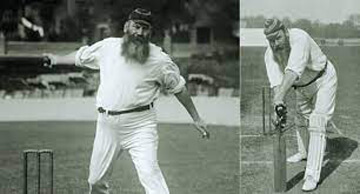The offside rule is one of the most complex rules in soccer but is critical for shaping attacking play. When the rule is properly enforced, it prevents offensive players from “cherry picking” by waiting near the opponent’s goal. However, when applied incorrectly, tight offside calls can frustrate fans and ruin the flow of the match. While the basics are simple - a player is in an offside position if they are beyond the second-to-last defender at the moment the ball is passed to them - the nitty gritty details about interfering with play and resets after possession changes make it a challenge to referee consistently. With the rise of VAR technology, officials now have tools to analyze offside situations more precisely, but the subjective nature of the rule still fuels controversy. Regardless of its complexity, the threat of the offside trap forces attackers to time their runs and work together creatively, preventing soccer from devolving into a goal-hanging free-for-all. When players and referees understand how to apply it properly, the offside rule remains an integral part of the beautiful game.
What is Offside Position?
The Basic Rule
An attacking player is in an offside position if:
- They are in the opposing team’s half of the field
- They are closer to the opposing team’s goal line than both the ball and the second-last defender
This typically occurs when an attacking player runs past the last defender before the ball is played forward by a teammate.
The offside position is judged at the moment the ball is played forward, not when the player receives it. So a player can be in an onside position when the pass is made but run past the defense and collect the ball in an offside position.
What Parts of the Body Count
When judging if a player is in an offside position, only their head, body and feet are considered. Their arms are ignored. So if their arm extends past the defender but the rest of their body doesn’t, they are still onside.
Intention is Irrelevant
A player’s intention does not matter for offside. Even if they do not intend to gain an advantage, they are still offside if their position meets the criteria.
There Must be Two Defenders
For a player to be in an offside position, there must be two defending players between them and the goal line at the moment the ball is played forward.
Usually this is the last defender and the goalkeeper. But if the goalkeeper comes out of the penalty area, the definition of the last defender changes accordingly.
No Offside Directly from Throw-ins, Corner Kicks, Etc
A player cannot be offside directly from a throw-in, goal kick or corner kick. This gives the attacking team an advantage during set pieces.
When in Doubt, Favor the Attacker
If there is any doubt about whether a player is in an offside position when the ball is played, the benefit of that doubt is given to the attacker. So marginal offside calls should go in favor of the attacking team.
Consequence of Offside
If a player in an offside position interferes with play, gains an advantage, or obstructs the opponent, the referee will penalize them by awarding an indirect free kick to the defending team.
So being in an offside position is not itself an offence - the player must actively participate in the play for the referee to call it.
When is Offside Called?
Being in an offside position is not an offense in itself. The player must be involved in active play by:
Interfering with play
A player in an offside position is penalized if they interfere with play by playing or touching a ball passed or touched by a teammate. Examples include touching, controlling, or attempting to play the ball. The player does not need to actually touch the ball, but just having an impact on the play while in an offside position is penalized.
Interfering with an opponent
A player in an offside position is penalized if they interfere with an opponent by: preventing an opponent from playing or being able to play the ball by clearly obstructing the opponent’s line of vision or movement, or challenging an opponent for the ball. Simply being in the way of an opponent is not enough, there must be active interference.
Gaining an advantage
A player in an offside position is penalized if they gain an advantage by being in that position. Examples include playing a ball that rebounds off the goalpost, crossbar or an opponent while in an offside position. Even if not touching the ball, just having the opportunity to gain an advantage is penalized.
In summary, being in an offside position itself is not penalized until a player interferes with play, an opponent, or gains an advantage. There must be active involvement while being in the offside position.
Offside Rule in Soccer
What is Offside?
The offside rule in soccer is one of the most complex rules in the sport. In simple terms, a player is in an offside position if they are nearer to the opponent’s goal line than both the ball and the second-last opponent when their teammate passes the ball to them. Being in an offside position is not an offense in itself, but a player in an offside position becomes penalized for offside if they become actively involved in play by interfering with play, interfering with an opponent, or gaining an advantage by being in that position.
The offside rule aims to prevent players from camping out near the opponent’s goal waiting for long passes. It encourages building up attacks through short passes and teamwork rather than just launching long balls downfield.
When Offside is Called
For a player to be called offside, the following conditions must be met at the moment their teammate passes the ball:
- The player is in the opposing team’s half of the field
- The player is nearer to the opponent’s goal line than both the ball and the second-last opponent
- The player becomes actively involved in play by interfering with play, interfering with an opponent, or gaining an advantage
The moment the ball is kicked is the reference point - if a player is behind the defense at this point, they are onside. Players cannot be called offside if they are level with the second-last defender or behind both the ball and the last two opponents.
Exceptions to the Offside Rule
There are two exceptions where a player cannot be called offside, even if they seem to be in an offside position:
- If a player receives the ball directly from a throw-in, goal kick, or corner kick, they cannot be called offside.
- If a player receives the ball directly from an opponent who deliberately played the ball, there is no offside offense.
These exceptions exist because with these types of plays, the defense usually has possession of the ball initially, meaning there is no possibility of an offside offense.
The offside rule requires precise judgment from the assistant referees. While controversial at times, it remains an integral part of soccer that encourages clever runs and combination play to beat the defensive line. Mastering the offside trap and coordinated movement of the back line are also key defensive tactics in the sport.
Calling Offside
The assistant referees watch for offside positions and communicate with the head referee to make the call.
The assistant referees (also called linesmen or lineswomen) are primarily responsible for judging offside positions during a soccer match. They are positioned along the touchlines on either side of the field.
Their main job is to watch the last defender and the second-last opponent (usually the goalkeeper) to determine where the offside line is at any given moment. When an attacking player moves beyond the last defender and the ball is played forward, the assistant referee judges whether the player was in an offside position when the pass was made.
If the assistant referee spots an offside infraction, they communicate with the referee by raising their flag straight up in the air. This is the signal for an offside offense. The referee will then blow the whistle to stop play if they agree it was offside based on the assistant’s judgment.
The assistant referees need to constantly stay aligned with the second-last defender to make accurate offside calls. Their positioning and concentration are crucial. Officiating offside is one of the hardest jobs for assistants.
Video Assistant Referee (VAR) may be used to review close offside decisions when a goal is scored.
In major professional matches, the Video Assistant Referee (VAR) system can help review judgment calls on goals, including close offside decisions leading up to a goal.
The VAR official watches video replays from multiple camera angles to look for clear errors in the lead-up to a goal. If there is doubt about an offside call on a scoring play, the VAR will communicate with the head referee and recommend a video review.
The referee can then go take a look at the video monitor on the sideline and decide whether to uphold or overturn the original call made on the field. VAR is meant to correct clear officiating mistakes, not re-referee close judgment calls.
The technology has helped get more offside calls right, especially goals scored on very tight offside margins where the assistant’s view may have been obscured. While not perfect, VAR has assisted referees in improving enforcement of the offside law and awarding goals fairly.
Penalty
If offside is called, the referee awards an indirect free kick to the opposing team from the spot of the offense.
Offside is one of the most common infractions in soccer. It occurs when an attacking player is in an offside position at the moment the ball is played by a teammate and becomes involved in active play by interfering with play, interfering with an opponent, or gaining an advantage.
An attacking player is in an offside position if they are nearer to the opposing team’s goal line than both the ball and the second-last defender. However, it is not an offense in itself to simply be in an offside position. The player must be involved in active play as outlined above for offside to be called.
If the referee determines a player is offside, an indirect free kick is awarded to the opposing team from the spot of the infraction. An indirect free kick means a goal cannot be scored directly from the kick - it must touch another player before going into the goal. Defenders must stand at least 10 yards from the ball until it is kicked.
The offside rule aims to prevent attackers from simply camping out near the opponent’s goal. It encourages creative build-up play and prevents the game from devolving into a long ball over the top. Offside is one of the most complex rules for newcomers to understand.
Conclusions
The offside rule in soccer, while controversial and complex, plays an integral role in shaping the modern game. By preventing attacking players from lingering near the goal, it forces creative build-up play and collective team movements to break defensive lines. Mastering the timing and coordination of runs to stay onside requires great skill and awareness from forwards. For defenders, organizing the offside trap by keeping a disciplined line is an artform.
While fans and pundits continue to debate its merits, offside is woven into the fabric of soccer. The threat of the flag going up keeps the game flowing and encourages clever combination play. With better assistant referee training and VAR technology assisting on critical calls, enforcement of offside should become more accurate over time. The core principles of the rule remain timeless – attackers cannot wait near the goal for the ball, they must move as a coordinated unit to unlock defenses. Rather than scrapping offside altogether, improving application through education and technology is the best path forward to maintain soccer’s unique rhythms and strategies. Offside provides a framework for innovation and will continue to be a flashpoint as new eras and tactics emerge in the beautiful game.







































